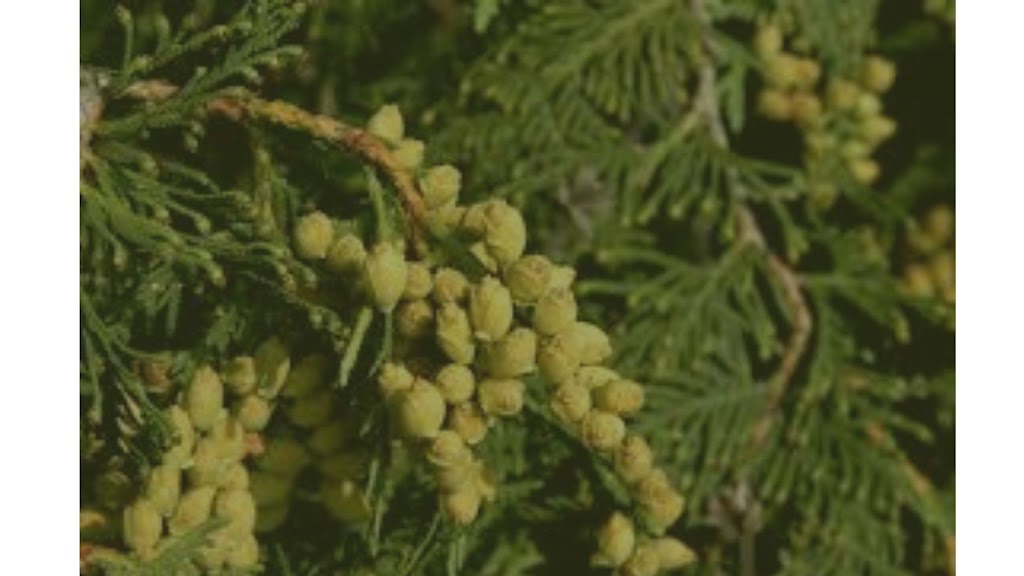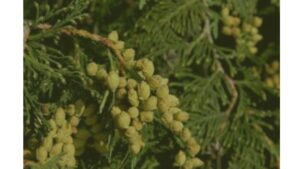Exploring Homeopathic Medicine Thuja: Origin, Extraction, Uses and Side Effects
Introduction
Homeopathy, a system of medicine founded on the principle of
“like cures like,” utilizes remedies derived from natural substances
to stimulate the body’s self-healing mechanisms. Among the diverse array of
homeopathic medicines, Thuja occidentalis, commonly known as Thuja, holds a
significant place due to its extensive therapeutic applications. This detailed
exploration covers the origin, extraction process, potencies, symptoms it
addresses, uses, potential side effects, and preventive measures associated with
Thuja.
Origin of Thuja
Thuja occidentalis, commonly known as Arborvitae or Northern
White Cedar is a coniferous tree native to North America. This evergreen tree,
belonging to the cypress family (Cupressaceae), can grow up to 20 meters tall
and is characterized by its fan-shaped, scaly leaves and aromatic properties.
Indigenous peoples of North America traditionally used Thuja for its medicinal
properties long before it was incorporated into homeopathic medicine.
In homeopathy, Thuja is derived from the fresh leaves and
twigs of the Thuja occidentalis tree. Its use in homeopathy was popularized by
Dr. Samuel Hahnemann, the founder of homeopathy, who recognized its potential
to treat various conditions.
Extraction Process
The extraction of Thuja for homeopathic use involves a
meticulous process to ensure the remedy’s potency and safety:
- Harvesting:
Fresh leaves and twigs of the Thuja occidentalis tree are carefully
harvested to preserve their medicinal properties. - Tincture
Preparation: The harvested plant material is then macerated in alcohol
to extract its active constituents. This mixture is left to stand for a
specified period, allowing the alcohol to absorb the medicinal properties
of the plant. - Potentization:
The tincture undergoes a process of potentization, which involves a series
of dilutions and succussions (vigorous shaking). Each dilution step
involves a specific ratio of tincture to alcohol, and succussion is
performed at each stage to enhance the remedy’s therapeutic properties. - Selection
of Potencies: The potentized Thuja is available in various potencies,
such as 6X, 30C, 200C, and higher. The appropriate potency is chosen based
on the individual’s symptoms and the discretion of the homeopath.
Symptoms Addressed by Thuja Homeopathy
Thuja is indicated for a wide range of conditions,
particularly those affecting the skin, mucous membranes, and immune system. The
primary symptoms addressed by Thuja include:
Skin Conditions
- Warts:
Thuja is renowned for its effectiveness in treating various types of
warts, including common warts, plantar warts, and genital warts. - Skin
Growths: It helps address skin tags, polyps, and other benign skin
growths. - Eczema:
Thuja can be beneficial for dry, scaly, and itchy skin conditions such as
eczema.
Mucous Membrane Conditions
- Polyps:
Thuja is used to treat polyps in areas such as the nose, throat, and
colon. - Sinusitis:
It can alleviate chronic sinusitis characterized by thick, greenish nasal
discharge and sinus congestion.
Immune System and Infections
- Viral
Infections: Thuja is effective against viral infections, particularly
those causing warts and papillomas. - Urinary
Tract Infections: It is used to treat recurrent urinary tract
infections, especially when accompanied by a sensation of fullness in the
bladder and sharp, burning pain during urination.
Mental and Emotional Symptoms
- Anxiety
and Depression: Thuja can help alleviate anxiety, depression, and
obsessive-compulsive tendencies, especially when these conditions are
accompanied by feelings of worthlessness or guilt. - Fixed
Ideas: It is indicated for individuals who have fixed ideas,
delusions, or a sensation of being under the influence of an external
force.
Thuja Homeopathic Medicine Uses
Thuja has diverse applications in homeopathy, making it a
versatile remedy for various conditions. Some of the key uses of Thuja include:
Skin Conditions
- Warts
and Skin Growths: Thuja is particularly effective in treating warts
and benign skin growths. It helps shrink and eliminate warts, skin tags,
and polyps without causing pain or scarring. - Eczema
and Psoriasis: Thuja provides relief from chronic skin conditions such
as eczema and psoriasis, reducing inflammation, itching, and scaling.
Mucous Membrane Conditions
- Nasal
Polyps and Sinusitis: Thuja is beneficial for chronic nasal polyps and
sinusitis, reducing inflammation, congestion, and discharge. - Genital
Warts: It is effective in treating genital warts caused by the human
papillomavirus (HPV), promoting healing and preventing recurrence.
Immune System and Infections
- Recurrent
Infections: Thuja strengthens the immune system and helps prevent
recurrent infections, particularly those affecting the urinary tract and
respiratory system.
Mental and Emotional Health
- Anxiety
and Depression: Thuja is used to treat anxiety and depression,
especially when accompanied by obsessive thoughts, fixed ideas, and
feelings of guilt or worthlessness. - Delusions
and Fixed Ideas: It helps individuals with delusions or fixed ideas,
providing mental clarity and emotional balance.
Side Effects of Thuja
While homeopathic remedies like Thuja are generally
considered safe when used as directed, there can be some rare side effects and
reactions:
Potential Side Effects
- Homeopathic
Aggravation: Some individuals may experience a temporary worsening of
symptoms, known as homeopathic aggravation, before experiencing
improvement. This is generally short-lived and indicates that the remedy
is working. - Allergic
Reactions: Although rare, allergic reactions to Thuja or its
components may occur in sensitive individuals. Symptoms may include skin
rashes, itching, or swelling. - Digestive
Upset: In some cases, Thuja may cause mild digestive upset, such as
nausea or stomach discomfort.
Preventive Measures
- Consultation
with a Homeopath: It is essential to consult a qualified homeopath for
proper diagnosis and treatment guidance, especially if using Thuja for
chronic or serious conditions. - Correct
Potency and Dosage: Following the prescribed potency and dosage
instructions is crucial to minimize the risk of side effects and ensure
optimal therapeutic benefits. - Monitoring
and Follow-Up: Regular monitoring and follow-up with a homeopath can
help track progress and adjust the treatment plan as needed.
FAQs about Homeopathic Medicine Thuja
Q1: What is Thuja in homeopathy?
A1: Thuja, also known as Thuja occidentalis or
Arborvitae, is a homeopathic remedy derived from the fresh leaves and twigs of
the Northern White Cedar tree. It is commonly used to treat various skin
conditions, mucous membrane issues, and immune system disorders.
Q2: How is Thuja prepared in homeopathy?
A2: Thuja is prepared through a process of maceration
and potentization. Fresh leaves and twigs are macerated in alcohol to create a
tincture, which is then diluted and succussed (vigorously shaken) repeatedly to
create different potencies of the remedy.
Q3: What conditions can Thuja treat?
A3: Thuja is primarily indicated for skin conditions
such as warts, skin tags, and polyps. It is also used for mucous membrane
conditions like nasal polyps and sinusitis, as well as for treating anxiety,
depression, and immune system issues such as recurrent infections and urinary
tract infections.
Q4: How is Thuja administered?
A4: Thuja is typically administered orally in the
form of small lactose pellets or liquid dilutions. The dosage and frequency
depend on the individual’s symptoms and the prescribed potency by the
homeopath.
Q5: Is Thuja safe for long-term use?
A5: When used as directed by a qualified homeopath,
Thuja is generally safe for long-term use. However, it is important to monitor
progress and adjust the treatment as needed under professional guidance.
Q6: Can Thuja be used for children?
A6: Yes, Thuja can be used for children, particularly
for conditions such as warts and recurrent infections. It is important to
consult a qualified homeopath to determine the appropriate dosage and potency
for children.
Q7: Are there any side effects of using Thuja?
A7: Homeopathic remedies like Thuja are generally
considered safe when used appropriately. However, some individuals may
experience a temporary worsening of symptoms (homeopathic aggravation) or rare
allergic reactions.
Q8: Can Thuja be used alongside conventional treatments?
A8: Thuja can complement conventional treatments in
some cases. However, it is important to consult with a healthcare professional
to ensure compatibility and avoid potential interactions.
Q9: How long does it take for Thuja to work?
A9: The time it takes for Thuja to work varies
depending on the individual’s condition, overall health, and response to the
remedy. Some people may experience improvement in symptoms within days or
weeks, while chronic conditions may require longer-term treatment.
Q10: Is Thuja effective for treating warts?
A10: Yes, Thuja is particularly effective in treating
various types of warts, including common warts, plantar warts, and genital
warts. It helps shrink and eliminate warts without causing pain or scarring.
Q11: Can Thuja be used for anxiety and depression?
A11: Thuja can help alleviate symptoms of anxiety and
depression, especially when these conditions are accompanied by obsessive
thoughts, fixed ideas, and feelings of guilt or worthlessness.
Q12: Are there any dietary restrictions while taking
Thuja?
A12: There are typically no specific dietary
restrictions associated with taking Thuja. However, maintaining a balanced and
healthy diet may support overall health and complement the effects of
homeopathic treatment.
Q13: Can Thuja be used during pregnancy or breastfeeding?
A13: It is advisable to consult a healthcare
professional before using Thuja during pregnancy or breastfeeding. A qualified
homeopath can provide guidance on the appropriate use of the remedy in such
circumstances.
Q14: How should Thuja be stored?
A14: Thuja should be stored in a cool, dry place away
from direct sunlight and strong odors. It is important to follow the storage
instructions provided by the manufacturer or healthcare provider.
Q15: Can Thuja be used for sinusitis?
A15: Yes, Thuja is beneficial for chronic sinusitis,
helping to reduce inflammation, congestion, and discharge. It is particularly
useful for sinusitis accompanied by thick, greenish nasal discharge.
Conclusion
Thuja, derived from the Thuja occidentalis tree, offers
valuable therapeutic benefits for a wide range of conditions, particularly
those affecting the skin, mucous membranes, and immune system. Its meticulous
preparation process and diverse applications make it a vital remedy in the
homeopathic materia medica.
By understanding the origin, extraction process, potencies,
symptoms it addresses, uses, potential side effects, and preventive measures
associated with Thuja, individuals can make informed decisions about its use in
promoting health and well-being. As with any homeopathic remedy, seeking
guidance from a qualified homeopath is essential to ensure safe and effective
treatment outcomes.
Through careful consultation, correct usage, and regular
monitoring, Thuja can provide relief and support for a variety of health
concerns, enhancing overall quality of life and well-being.

